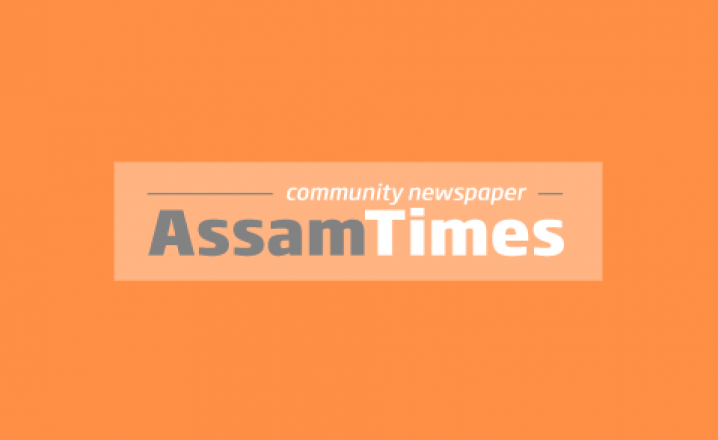It is a pity that India's robust smoke-free policies have been challenged by those with vested interests neglecting the immense and undisputed proven public health benefits of implementing such policies for people at-large.
India is to ban smoking in public places nation-wide from October 2. However the ITC Limited and the Indian Hotel Association are among those who have challenged these public health policies in the court of law. The hearing by the honourable court is due.
"Secondhand smoke, also know as environmental tobacco smoke (ETS), is a mixture of the smoke given off by the burning end of a cigarette, pipe or cigar and the smoke exhaled from the lungs of smokers. It is involuntarily inhaled by nonsmokers, lingers in the air hours after cigarettes have been extinguished and can cause or exacerbate a wide range of adverse health effects, including cancer, respiratory infections, and asthma" informs Professor (Dr) Rama Kant, who heads the Tobacco Cessation Clinics at CSM Medical University and Gandhi Memorial & Associated Hospitals.
"Secondhand smoke has been classified by the Environmental Protection Agency (EPA) as a known cause of cancer in humans (Group A carcinogen)" informs Dr Rishi Sethi, Department of Cardiology, CSM Medical University.
Secondhand smoke exposure causes disease and premature death in children and adults who do not smoke. Secondhand smoke contains hundreds of chemicals known to be toxic or carcinogenic, including formaldehyde, benzene, vinyl chloride, arsenic ammonia and hydrogen cyanide. Secondhand smoke causes approximately 3,400 lung cancer deaths and 22,700-69,600 heart disease deaths in adult nonsmokers in the United States each year, further adds Dr Sethi.
Nonsmokers exposed to secondhand smoke at work are at increased risk for adverse health effects.
There is enough data to de-bunk the apprehensions of ban on smoking at the workplace. Since 1999, 70 percent of the U.S. workforce worked under a smoke-free policy, ranging from 83.9 percent in Utah to 48.7 percent in Nevada. Workplace productivity was increased and absenteeism was decreased among former smokers compared with current smokers.
Secondhand smoke is especially harmful to young children. Secondhand smoke is responsible for between 150,000 and 300,000 lower respiratory tract infections in infants and children under 18 months of age, resulting in between 7,500 and 15,000 hospitalizations each year, and causes 430 sudden infant death syndrome (SIDS) deaths in the United States annually, says Dr Sethi.
Secondhand smoke exposure may cause buildup of fluid in the middle ear, resulting in 790,000 physician office visits per year.10 Secondhand smoke can also aggravate symptoms in 400,000 to 1,000,000 children with asthma.
The Surgeon General's Report concluded that scientific evidence indicates that there is no risk-free level of exposure to secondhand smoke.
The 3rd edition of the "Global Tobacco Treaty Action Guide 2008: Protecting Against Tobacco Industry Interference" was released earlier this week in many countries including India. The Global Tobacco Treaty Action Guide 2008 is produced by Corporate Accountability International [which is in official relations with the World Health Organization (WHO)], along with the Network for Accountability of Tobacco Transnationals (NATT).
"The repeated delay, at times weakening, and postponing the implementation of public health policies in India, particularly the provisions of the Cigarettes and Other Tobacco Products Act, 2003, mustn't occur again. With few days to go before India enforces ban on smoking in public places from 2 October 2008, and few more weeks to go before mandatory pictorial warnings on tobacco products from 30 November 2008 get enforced, it is high time to prepare ourselves to contribute effectively in the implementation of these health policies" said Dr Sandeep Pandey, national convener of National Alliance of People's Movements (NAPM) and Magsaysay Awardee (2002).
"For years the tobacco industry has operated with the express intention of subverting public health policies. If the tobacco giants were truly serious about saving lives, they would back off and let governments swiftly, fully implement the public health policies, including the national health policies and also the Framework Convention on Tobacco Control (FCTC) – the first global corporate accountability and public health treaty" added Dr Pandey.
Let us hope that good sense prevails and public health and welfare is upheld above corporate interests.
Bobby Ramakant
(The author is a World Health Organization (WHO)'s WNTD Awardee (2008) and a FCTC Working group member of Network for Accountability of Tobacco Transnationals (NATT). He can be contacted at: bobbyramakant@yahoo.com)
India is to ban smoking in public places nation-wide from October 2. However the ITC Limited and the Indian Hotel Association are among those who have challenged these public health policies in the court of law. The hearing by the honourable court is due.
"Secondhand smoke, also know as environmental tobacco smoke (ETS), is a mixture of the smoke given off by the burning end of a cigarette, pipe or cigar and the smoke exhaled from the lungs of smokers. It is involuntarily inhaled by nonsmokers, lingers in the air hours after cigarettes have been extinguished and can cause or exacerbate a wide range of adverse health effects, including cancer, respiratory infections, and asthma" informs Professor (Dr) Rama Kant, who heads the Tobacco Cessation Clinics at CSM Medical University and Gandhi Memorial & Associated Hospitals.
"Secondhand smoke has been classified by the Environmental Protection Agency (EPA) as a known cause of cancer in humans (Group A carcinogen)" informs Dr Rishi Sethi, Department of Cardiology, CSM Medical University.
Secondhand smoke exposure causes disease and premature death in children and adults who do not smoke. Secondhand smoke contains hundreds of chemicals known to be toxic or carcinogenic, including formaldehyde, benzene, vinyl chloride, arsenic ammonia and hydrogen cyanide. Secondhand smoke causes approximately 3,400 lung cancer deaths and 22,700-69,600 heart disease deaths in adult nonsmokers in the United States each year, further adds Dr Sethi.
Nonsmokers exposed to secondhand smoke at work are at increased risk for adverse health effects.
There is enough data to de-bunk the apprehensions of ban on smoking at the workplace. Since 1999, 70 percent of the U.S. workforce worked under a smoke-free policy, ranging from 83.9 percent in Utah to 48.7 percent in Nevada. Workplace productivity was increased and absenteeism was decreased among former smokers compared with current smokers.
Secondhand smoke is especially harmful to young children. Secondhand smoke is responsible for between 150,000 and 300,000 lower respiratory tract infections in infants and children under 18 months of age, resulting in between 7,500 and 15,000 hospitalizations each year, and causes 430 sudden infant death syndrome (SIDS) deaths in the United States annually, says Dr Sethi.
Secondhand smoke exposure may cause buildup of fluid in the middle ear, resulting in 790,000 physician office visits per year.10 Secondhand smoke can also aggravate symptoms in 400,000 to 1,000,000 children with asthma.
The Surgeon General's Report concluded that scientific evidence indicates that there is no risk-free level of exposure to secondhand smoke.
The 3rd edition of the "Global Tobacco Treaty Action Guide 2008: Protecting Against Tobacco Industry Interference" was released earlier this week in many countries including India. The Global Tobacco Treaty Action Guide 2008 is produced by Corporate Accountability International [which is in official relations with the World Health Organization (WHO)], along with the Network for Accountability of Tobacco Transnationals (NATT).
"The repeated delay, at times weakening, and postponing the implementation of public health policies in India, particularly the provisions of the Cigarettes and Other Tobacco Products Act, 2003, mustn't occur again. With few days to go before India enforces ban on smoking in public places from 2 October 2008, and few more weeks to go before mandatory pictorial warnings on tobacco products from 30 November 2008 get enforced, it is high time to prepare ourselves to contribute effectively in the implementation of these health policies" said Dr Sandeep Pandey, national convener of National Alliance of People's Movements (NAPM) and Magsaysay Awardee (2002).
"For years the tobacco industry has operated with the express intention of subverting public health policies. If the tobacco giants were truly serious about saving lives, they would back off and let governments swiftly, fully implement the public health policies, including the national health policies and also the Framework Convention on Tobacco Control (FCTC) – the first global corporate accountability and public health treaty" added Dr Pandey.
Let us hope that good sense prevails and public health and welfare is upheld above corporate interests.
Bobby Ramakant
(The author is a World Health Organization (WHO)'s WNTD Awardee (2008) and a FCTC Working group member of Network for Accountability of Tobacco Transnationals (NATT). He can be contacted at: bobbyramakant@yahoo.com)
- 10908 reads








Add new comment